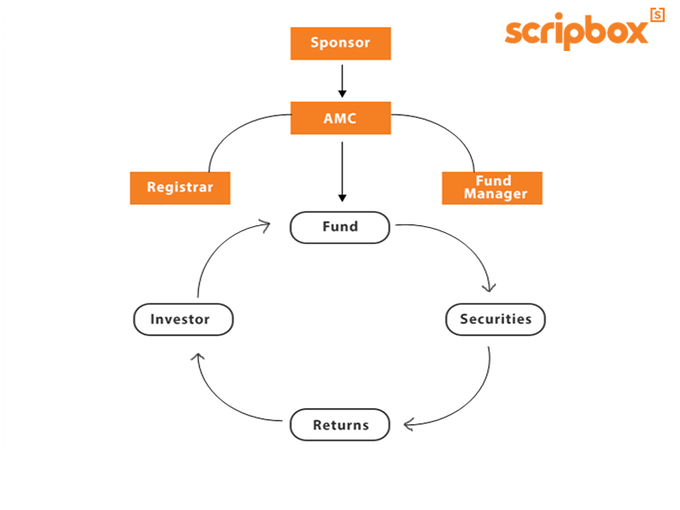
In essence, mutual fund investing is about trusting your money to a professional
The investment manager collects a pool of money from a large number of investors and makes the day-to-day decisions to invest it in a portfolio of securities or other assets. These could be
Then you only need to monitor if the
How it works in practice is as follows:

A reputed financial service company with a track record of managing
After getting a license, the AMC decides what kind of mutual fund they want to offer. They can offer just one or many options. Each is called a Mutual Fund Scheme (commonly shortened to scheme, mutual fund or just fund). They will also appoint one or more named individuals to act as the fund manager for that scheme. While offering the Scheme, the AMC clearly defines the investment objective and the mode of operation of the scheme in a set of Offer Documents the format of which has been specified by the regulator. This ensures that the public investor knows exactly how their money is going to be invested.
Let’s say the fund house offers two schemes:
Scheme 1: invests in stocks
Scheme 2 invests in bonds.
As an investor, you can choose to invest in whichever one suits your purpose. Like you, thousands of investors will ‘subscribe to’ or ‘buy’ that scheme. The money so collected is the pool of money or ‘corpus’ available for the fund manager. He or she will then take the decisions about which specific stocks to invest that money in.
The total corpus of the mutual fund scheme is sub-divided into units (or shares), which the investors buy. To begin with the corpus is divided into units of Rs 10.
As the value of the investments made by the mutual fund changes, the value of the units changes as well. This is called the NAV (Net Asset Value) of the unit. It’s calculated by dividing the total value of the net assets of the fund by the number of units. This is published daily so you know how your money is doing. You also get periodic statements with information about your holdings.
The AMC does not do all this for free. They charge a fee for managing the money. In addition there are other costs such as brokerage fees, costs of publishing statements etc. These need to be borne by the investors and are deducted from the corpus periodically. These are called Expenses of the fund and the ratio of expenses to the total money managed by the fund is called Expense Ratio. To protect investors, the regulator SEBI has specified the maximum expense ratio that can be charged. Most fund houses manage to control costs and keep the expenses below the maximum cap.
That was probably a lot of new stuff to learn in one go. But now you can hold your own when your advisor throws these terms at you:
- Asset Management Company (AMC, Mutual Fund Company or Fund House)
- SEBI (Securities & Exchange Board of India)
- Mutual Fund Scheme (Scheme, mutual fund or fund)
- Offer Documents
- Units or shares
- NAV (Net Asset Value)
- Expenses, Expense Ratio
(About the author: This article has been contributed by Sanjiv Singhal, CEO, scripbox.com.)